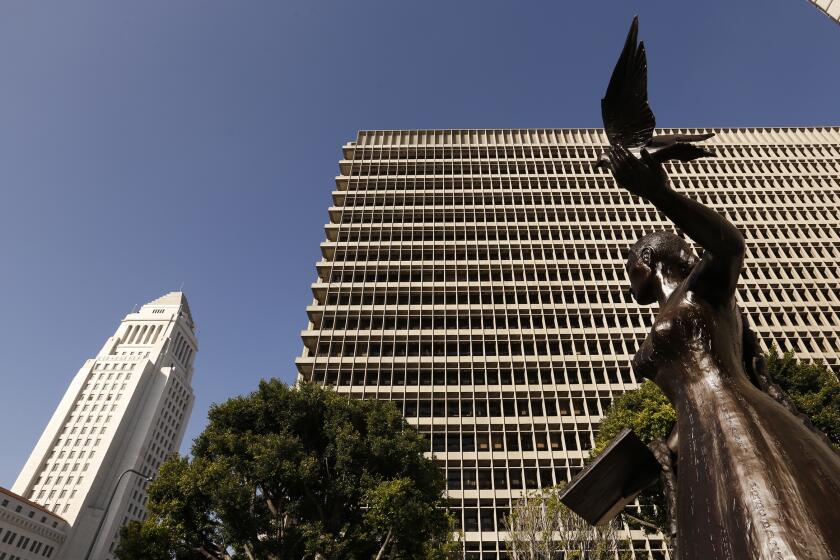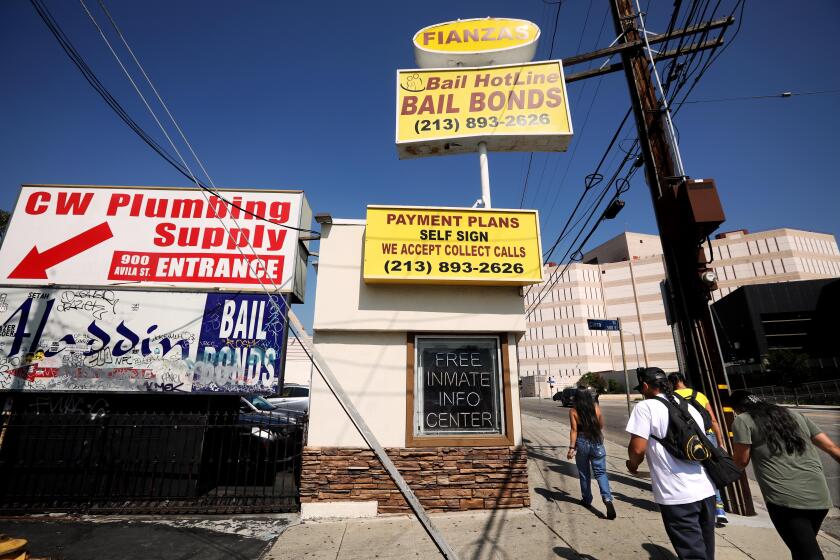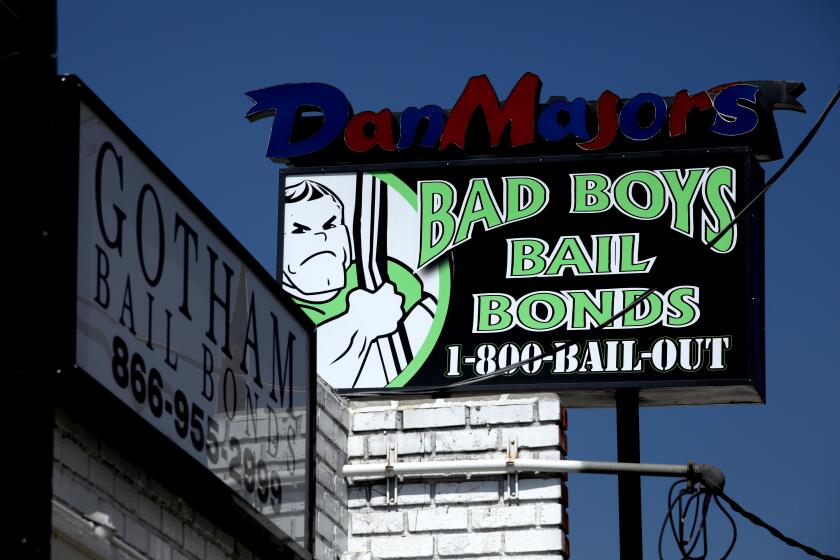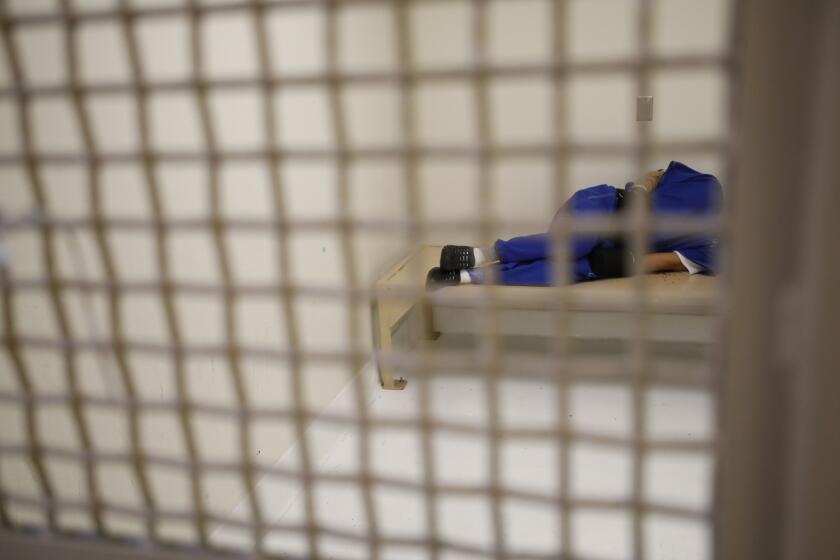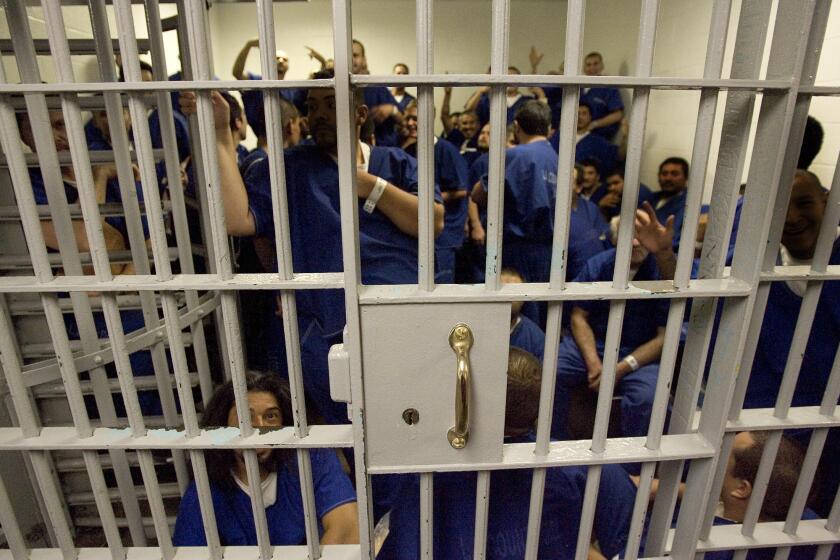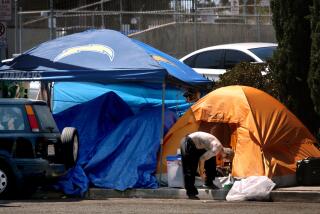Editorial: L.A. County cities should stop fighting the end of cash bail. It’s working
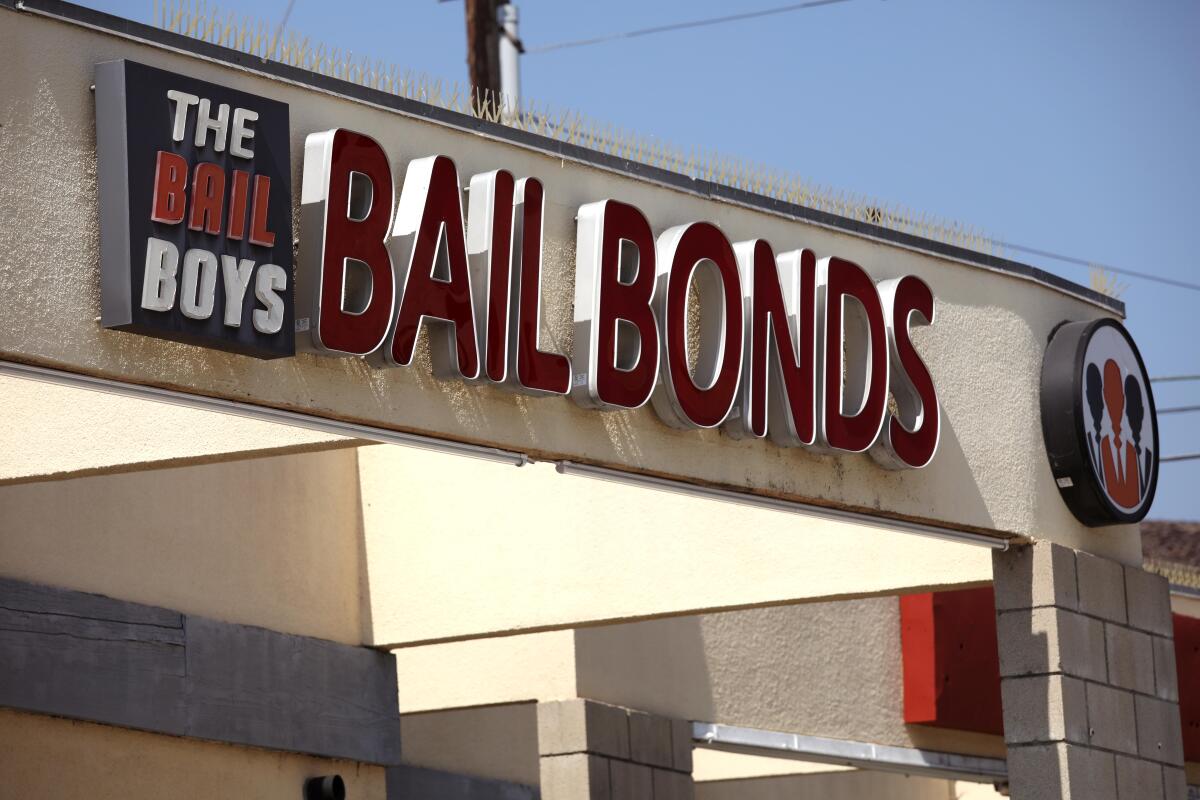
The end of money bail for most nonviolent and nonserious crimes hasn’t increased repeat arrests or court no-shows, according to Los Angeles Superior Court data on the first four months of the court’s bail-free release protocol.
This was a pleasant surprise for many in law enforcement, who were wary of a program that allows many suspects to walk free after their arrest but before their first court appearance. “I believe we are on the right path at this time,” Sheriff Robert Luna told the Board of Supervisors at a Tuesday hearing.
Data from three weeks of the new pre-arraignment release protocol pokes some serious holes in the false and fearful narrative peddled by police and far too many politicians.
This good news ought to prompt Whittier, Santa Clarita, Santa Monica and more than two dozen other cities to drop their ill-considered lawsuit to block the court’s bail reform program. The suit was filed in September and transferred to an Orange County Superior Court judge. He threw it out in December but gave the cities until Friday to file a new complaint.
The results of the Pre-Arraignment Release Protocol are similar to what criminal justice researchers have found in other U.S. cities and counties that have eliminated bail. The consensus of academic studies is overwhelmingly that using money bail increases the likelihood of crime.
It’s time for L.A. elected officials to defend reforms that eliminate unfair and unsafe money bail. A Superior Court program will take a step next week.
The data may be disappointing to candidates for district attorney in Tuesday’s election, many of whom are campaigning on fear-mongering claims that reforms such as eliminating money bail have fueled an epidemic of crime.
But crime in most categories fell last year over the previous year and continues to fall. In categories in which it has risen, such as theft, data from police, courts and jails suggest little connection to no-bail release so far. A year’s worth or more of data would provide a more confident assessment.
The best way to eliminate money bail while considering a defendant’s risk of flight or harm is to drastically shorten the time between arrest and arraignment.
The latest numbers are also disappointing to those who have supported the program because they reasonably thought it would reduce the population of Men’s Central Jail, a decrepit and dangerous facility.
But jail populations have not decreased. Why not? If fewer people can be held on bail, it stands to reason that fewer would be held at all.
The word “bail” and related terms can mean many different things. The resulting confusion helps bail reform opponents in their fight to keep the unjust status quo.
One answer could be that the court is so careful and conservative in transitioning to the no-bail program that it might be holding more suspects in custody than absolutely necessary. Those who worried groundlessly that eliminating money bail would lead to greater crime should take note.
The L.A. Superior Court judges who review people arrested for crimes eligible for no-bail release are increasingly ordering holds (most people arrested for the lowest-level crimes are released without review). It was initially presumed that the judges would release the majority of people whose cases they reviewed. After four weeks, though, the number was 64%. It jumped to 84% after eight weeks, and at 20 weeks it is now at 87.1%.
The argument that money bail “holds people accountable” or imposes “consequences” for alleged crimes is an admission that the system is used to punish people who have been arrested but not convicted. That violates the Constitution.
That’s a lot. The court should study why judges are holding so many, and how to give them the confidence that more people can be released safely before arraignment.
The county provides services to help keep people from trouble and ensure they show up in court at the appointed time. But referrals to housing, employment and substance and mental health treatment, and free transportation to court, work or child care, are voluntary. If judges could mandate them as conditions of no-bail release, they might be more confident in allowing defendants to go home.
Standing in the way is bureaucracy, including the screening and qualifying that health insurance companies require before covering treatment. That won’t be an easy nut to crack, but the county should try.
Bail-or-jail upon arrest will largely disappear from L.A. County, correcting an injustice yet raising concerns at a time of high-profile retail thefts. First in a series.
Meanwhile, it’s important to keep in mind that the defendants who pose the greatest risk to public safety — those arrested on suspicion of serious and violent crimes — are not part of the no-bail program and are automatically set free if they qualify for bail and can pay.
They go through none of the vetting that lower-risk defendants must go through. Changing that will require a change in state law, and Los Angeles County and the Superior Court should put such a change high on their legislative agendas.
More to Read
A cure for the common opinion
Get thought-provoking perspectives with our weekly newsletter.
You may occasionally receive promotional content from the Los Angeles Times.
